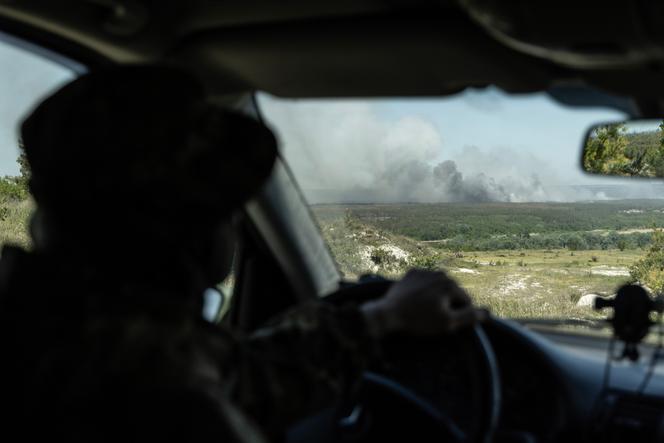


Volodymyr Zelensky tried to be reassuring. "We remain in control everywhere," said the Ukrainian president in a video message broadcast on Monday, May 20, after a meeting with his general staff. Nevertheless, anxiety persists in the Western camp after Russia opened a new front in northeastern Ukraine. Since crossing the border between the two countries north of Kharkiv on May 10, Russian forces have seized just over 150 square kilometers of territory. In 10 days, some 10 villages and hamlets have been taken, and more than 14,000 residents have had to move away from the combat zone, according to the World Health Organization.
Western analysts believe the Kremlin carefully planned the opening of a new front. For months, the Russians have been stalling in the Donbas. In one year, the only significant towns conquered by Moscow's forces were Bakhmut in May 2023 and Avdiivka in February, both incurring heavy losses. However, Russian President Vladimir Putin has made the total conquest of the Donbas, partially occupied since 2014, his main war objective. This goal has been in place since the failure of the "special military operation" launched on February 24, 2022, which was supposed to capture Ukraine in a matter of weeks.
By opening up a new front in northern Ukraine, Russia is betting that the Ukrainians, exhausted by more than two years of war, will be unable to maintain their positions across the entire 1,000-kilometer-long battlefront. "By crossing the border at this point, the Russians are stretching the battle line and forcing the Ukrainians to make lateral troop transfers, which could weaken their positions elsewhere, in the east or south of the country," explained Thibault Fouillet, scientific director of the Institute for Strategy and Defense Studies.
In reality, the conquest of Kharkiv, Ukraine's second most populous city (it had a population of 1.4 million before the war), seems beyond Russia's reach, even though their most advanced units are only 30 kilometers from the city. "However, that's not their objective. What the Russians want is to force the Ukrainians to move their best-mechanized brigades, the ones holding the front in the Donbas, into the region," explained Stéphane Audrand, an international risk consultant and reserve officer, who sees this tactic as "a lesson" for the French army. "The Russians demonstrate that sending out poorly trained recruits with the wrong weapons can be enough to push ahead. Numbers matter!"
More worryingly, the Ukrainian army has been warning for several days that new enemy troops are gathering further north, near the Sumy region. According to military sources quoted by the American think-tank Institute for the Study of War (ISW), Moscow has already amassed between 9,000 and 10,000 troops on the other side of the border. "Russian forces are concentrating limited, understaffed, and incohesive forces in the Sumy direction, but even such a grouping of Russian forces will be able to achieve the likely desired effect of drawing and fixing Ukrainian forces in the international border area," warned the ISW.
You have 37.17% of this article left to read. The rest is for subscribers only.
